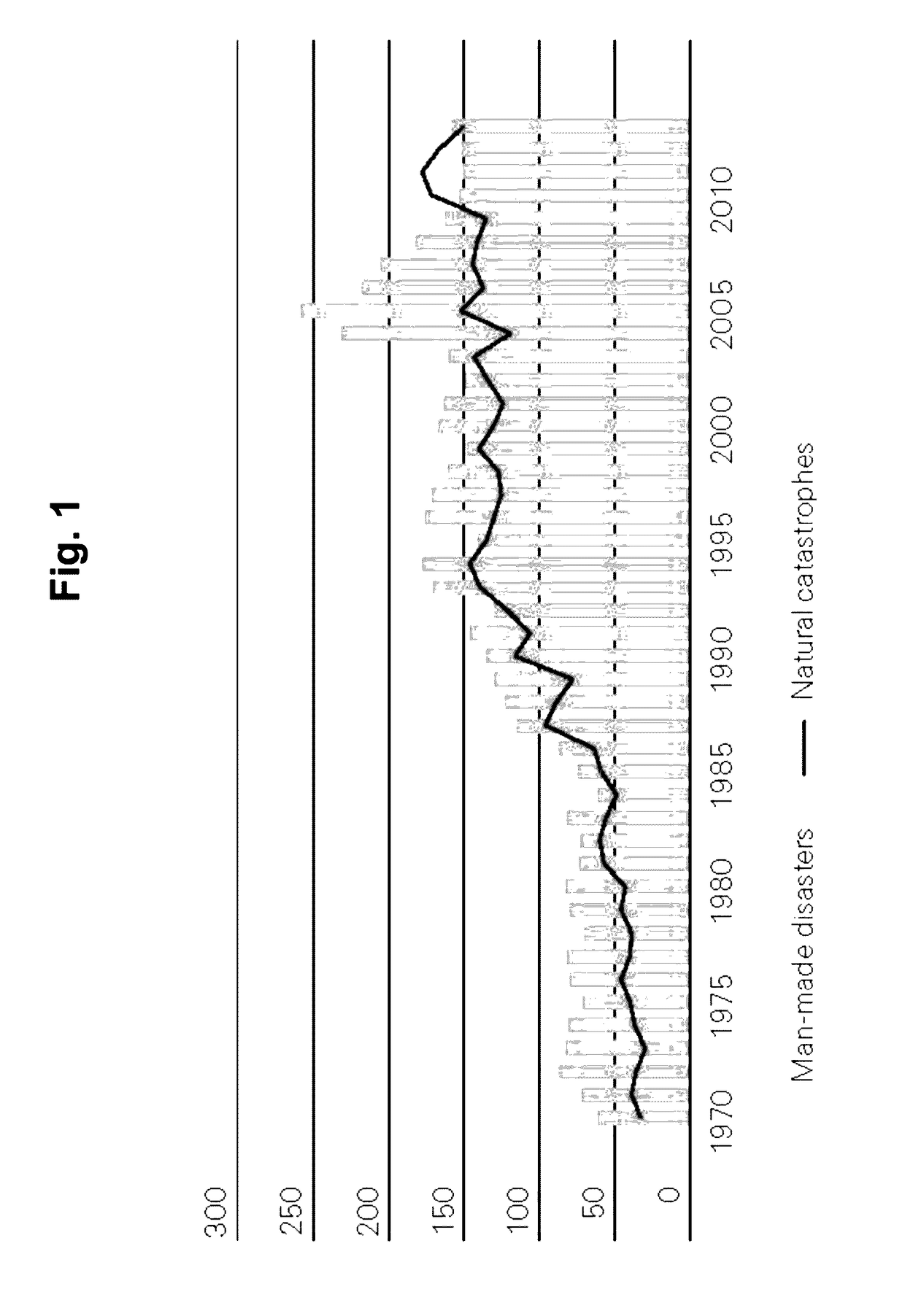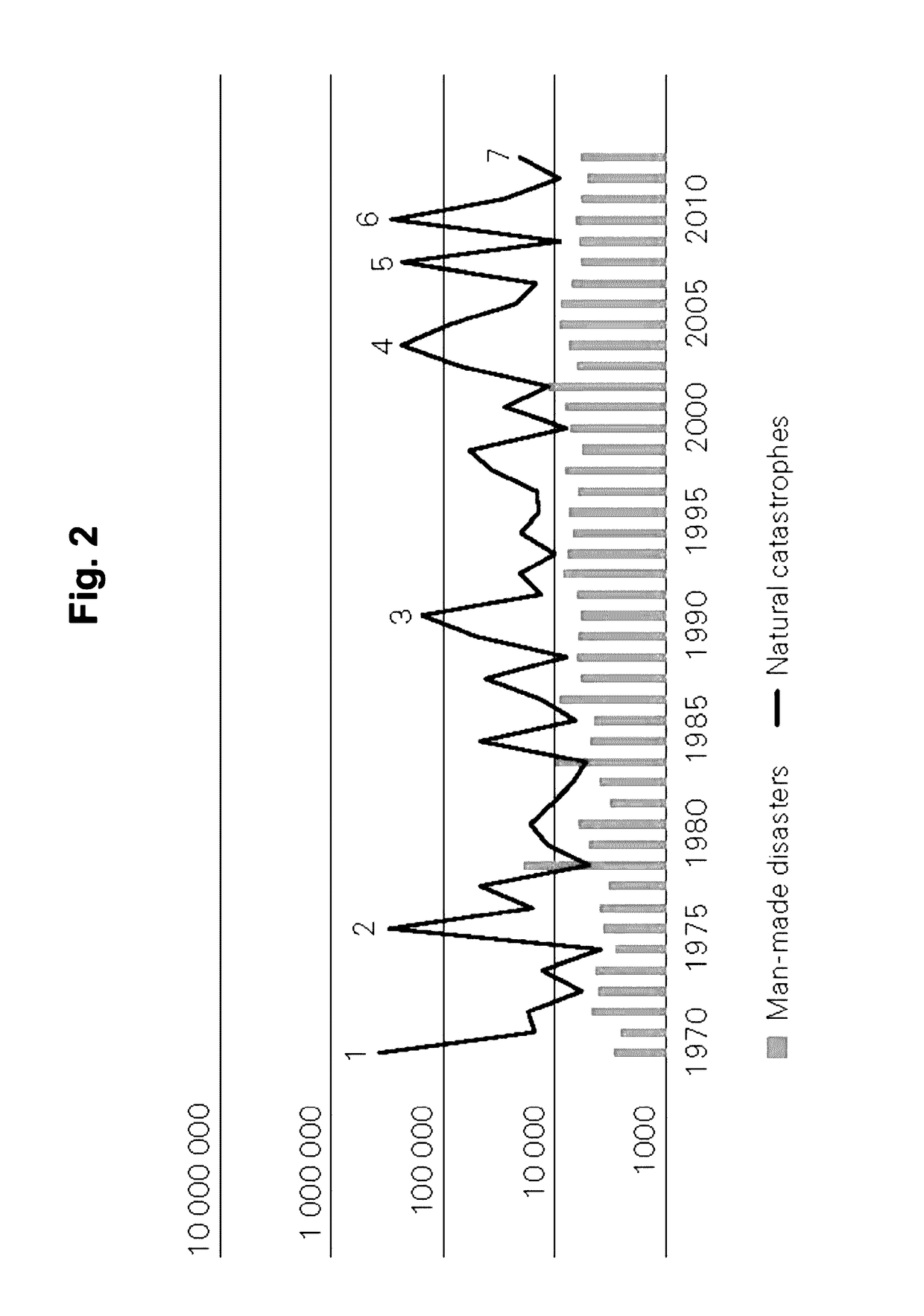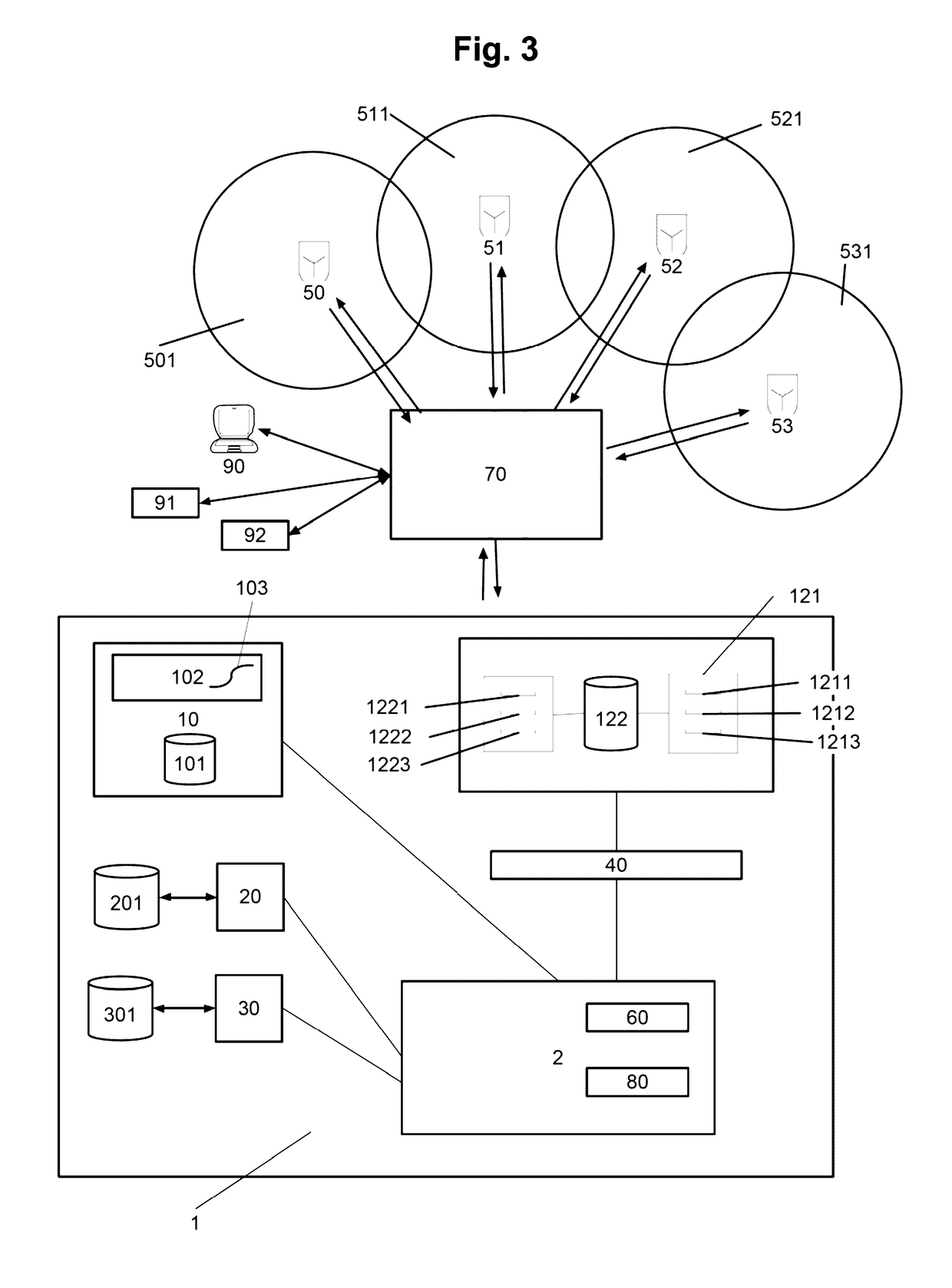Disaster risk management and financing system, and corresponding method thereof
a technology applied in the field of disaster risk management and financing system, can solve the problems of increased poverty, major destructive impact, and catastrophic impact on the gross domestic product, and achieve the effect of improving the risk profile of a specific country and understanding
- Summary
- Abstract
- Description
- Claims
- Application Information
AI Technical Summary
Benefits of technology
Problems solved by technology
Method used
Image
Examples
Embodiment Construction
[0024]FIG. 3 schematically depicts an architecture for a possible implementation of an embodiment of the automated disaster management and management forecast system 1 for forecasting the impact of disaster mitigation and financing means based on location-dependent natural disaster impacts. For the computer-based disaster management and management forecast system 1, measuring parameters of historical disaster events are captured in order to determine the impact of natural disaster events and then critical values of parameters of natural disaster events are used as triggers in order to generate forecasts of the impacts of disaster events within a geographic area 501, 511, 521, 531 . . . .
[0025]Country-specific parameters 1211, 1212, 1213 of a risk-exposed country 501, . . . 531 are captured, relating to stored predefined criteria 1221, 1222, 1223 by means of the associated measuring stations 50 . . . 53. The country-specific parameters 1211, 1212, 1213 can comprise at least national ...
PUM
 Login to View More
Login to View More Abstract
Description
Claims
Application Information
 Login to View More
Login to View More - R&D
- Intellectual Property
- Life Sciences
- Materials
- Tech Scout
- Unparalleled Data Quality
- Higher Quality Content
- 60% Fewer Hallucinations
Browse by: Latest US Patents, China's latest patents, Technical Efficacy Thesaurus, Application Domain, Technology Topic, Popular Technical Reports.
© 2025 PatSnap. All rights reserved.Legal|Privacy policy|Modern Slavery Act Transparency Statement|Sitemap|About US| Contact US: help@patsnap.com



